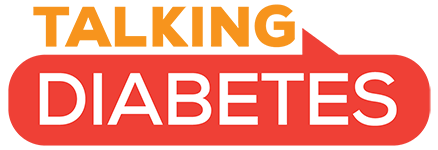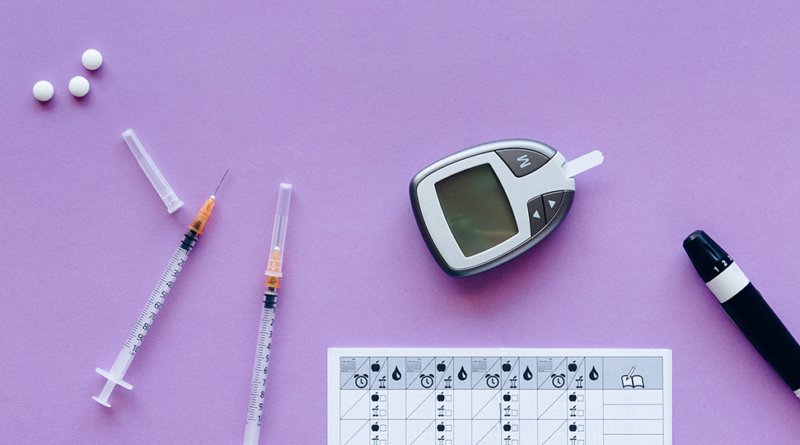Tips and Hacks to Make Diabetes Easier
When you are diagnosed with type 1 diabetes, you learn all the “rules” from your diabetes care team, such as how, when, and where (on what body part) to take insulin; how to count carbohydrates; what to do when you are ill; and what devices you should consider using. But, sometimes, even when you do everything as taught, your blood sugars don’t behave like you think they will. Sometimes you can take the same amount of insulin for the exact same meal three times in a row and can have three different results. There are many variables that can affect blood glucose, and sometimes it’s impossible to narrow it down to one.
Diabetes is not a black and white condition; it’s often a very grey area, meaning finding solutions for challenges can require getting creative and a lot of trial and error. Check out our list of common “Diabetes Hacks.” These tips are partly based on medical knowledge and partly based on what others with type 1 have learned over time. Please don’t consider them official medical advice, and as always consult your medical team before making medical decisions.
High BG Tips/Hacks:
- When your blood sugar is high, hydration matters. Drink plenty of water or other non-caffeinated fluids.
- Hot water causes a faster absorption of insulin. So, in general, you should not bolus and then take a hot bath or shower, UNLESS you do not have ketones* and are trying to bring down a high blood sugar.
- *If you have ketones, you don’t want to bring your blood sugar down too quickly, because it can put you at risk for swelling in the brain. Be sure to follow sick day or ketone management recommendations or connect with your diabetes care team when you have ketones.
- Some people need to take insulin for coffee, even black coffee, to avoid highs.
- If you are of legal drinking age, combining a glass of wine or one beer with a high-fat meal (such as pizza) can help balance the delayed rise in glucose, similar to an extended bolus for fat and protein.
Insulin Tips/Hacks:
- ou can inject into muscle to speed up insulin action to bring down a high blood sugar if you do NOT have ketones.1
- Insulin that is being used does not need to be refrigerated. Usually, the recommendation is to keep unopened insulin in the fridge so that it lasts longer. When you are using an open vial or pen, it should be at room temperature. Advice from the FDA on storing insulin in an emergency, such as a hurricane, when you may not have power.
- You can inject through clothing, if you need to. It’s obviously better not to, but if you’re in a situation where it’s your only option, it’s certainly better than not injecting.2
- You can also re-use syringes if you need to, but you should be cautious because sometimes with overuse, disposable syringes can break off inside the skin, which can potentially be dangerous.
- You can inject or do an infusion set anywhere on the body where you can “pinch an inch” of fatty tissue, except breast tissue. (Diabetes Educator Resource on Injection Location + Rotation)
- If you are outside in the heat and need to keep your insulin cooler due to the heat, you can use a cooler with ice packs (but don’t put directly on the ice or it can freeze, which means it is not useable) or you can try something like Frio Packs.
- You can use a mix of insulin types to best meet your needs.
- For example, if you are on multiple daily injections (MDI), you can use inhaled insulin for meals or snacks when you’re away from home instead of an injection.
- Some people also have a prescription for inhaled insulin to use for post-meal high blood sugars even if they use an insulin pump.
- If you are not able to Pre-Bolus ahead of meals, you can take some of the insulin up front and the rest after the meal. You can also eat the non-starchy vegetables first, then the protein, and then the carbohydrates to allow time for the insulin to start working.
CGM Tips/Hacks:
- Sometimes you can purchase your CGM through your pharmacy benefit instead of the medical/durable medical equipment benefit, and it can save you money. Contact your insurance carrier to find out.
- Some people with diabetes restart Dexcom G6 CGM sensors by removing the transmitter for 30 minutes, cleaning with alcohol then replacing the transmitter.
- Examples of items used to pop out the transmitter: test strips, credit cards, medical insurance cards, etc.
- You don’t need to have the high alerts turned on for your CGM. Sometimes taking a break from alerts can be helpful, especially if you are experiencing alarm fatigue or diabetes distress/burnout.
- You can also set the CGM alerts higher for a temporary time period to provide some emotional relief.
- To be safe, you can also have someone follow your Dexcom data and have them get the high alerts if you’re approaching 300 mg/dl.
- If you don’t have a CGM but are looking to figure out your blood glucose patterns, you can strategically check blood glucose by fingerstick to figure out different patterns.
- If you’re trying to see if your basal insulin is working well, check your blood sugar before sleep, then when you wake up before you have eaten.
- If you’re trying to see if an insulin to carbohydrate ratio is working, start with a BG in target before a meal, then eat a meal in which you have confidence in the carbohydrate count, then check your BG 2 hours after and, if you are less than 180 mg/dl or have risen less than 50 mg/dl, that carb ratio is likely appropriate for you.
- There are tips and tricks to optimize the use of the Freestyle Libre CGM as well. The video linked here has extensive information, including reminders to expect variability between the CGM and the Blood Glucose Meter (BGM), which is normal for all CGM’s.
- You can also set the CGM alerts higher for a temporary time period to provide some emotional relief.
Low BG Tips/Hacks:
- If you are having low blood sugars and cannot eat or keep food down, you can take small doses of glucagon by using the classic glucagon kits. To take a “mini-gluc”, you mix the glucagon up into the vial, then instead of drawing up into the intramuscular syringe, you can draw up a smaller dose in an insulin syringe and inject like you normally inject insulin.
- For kids under 18 years, it’s typically recommended to draw up the number of units for the age in years. So, if someone is 15 years old, they would take 15 units. (For kids less than 2 years, 2 units is recommended)
- For adults, trying a smaller amount may work depending on how low the glucose is and how much glycogen stores are available.
- If you have consumed alcohol, the glucagon may not be as effective.
- If you have exercised a lot or not eaten a lot of food, the same may be true, and you may need higher doses.
- If you are having a low and cannot eat, you can also suck on a glucose tablet or other fast-acting carbohydrate and start getting some absorption in your cheeks (called buccal absorption).
- There are ongoing studies looking at using ready to go mini-dose glucagons that look very promising!
Other Tips/Hacks:
- For those using Tandem Control-IQ, some find it beneficial to use “sleep mode” for longer durations or even turned on all the time.
- Some HCP’s will recommend that you keep sleep mode on until 2-3 hours after you normally wake up
- If you have skin allergies, which is very common for people with diabetes, you can use different techniques to avoid rashes from infusion sets or CGM sensors. For these methods, you want to make sure that there is a small circle for the insertion to go in without the treatment to avoid inserting it into the skin. Most people will use the treatment then use an alcohol swab in a small area for the insertion to go in.
- Barrier wipes prior to insertion, such as Cavillon Wipes.
- Flonase sprayed on the skin reduces rash in many people.
- Tuft Pads can be used as a physical barrier.
- Medical tapes that have been used and shown not to cause a rash can be used, just cut a small hole for the sensor/infusion set to go through so you are not inserting plastic or tape into the body.
- There are many different techniques to help things stick to the skin and remove gently.
- Over tapes of all sorts such as Tegaderm, Hypafix, etc.
- Skin Tac or other wipes that help things stick.
- Unisolve and Tac Away for removal.
- For the ultimate diabetes hack, you can build your own automated insulin delivery system, DIYAPS or Loop.
You cannot learn everything about diabetes from reading about it, and there are many Diabetes Hacks that are common in the diabetes community. These should not substitute for medical advice but may help you in navigating some of the day-to-day challenges those of us with diabetes often face. Meeting others in the diabetes community is helpful in many ways, and learning about different Diabetes Hacks could make your diabetes life easier. Check out cwd.is/community for upcoming events for families and people with diabetes. CWD recognizes that life is often lived off label, and hope that these help you navigate the many challenges diabetes presents.
Sources: https://childrenwithdiabetes.com/cwd-news/diabeteshacks/
https://diatribe.org/put-some-muscle-your-insulin
https://www.researchgate.net/publication/14160823_The_Safety_of_Injecting_Insulin_Through_Clothing

